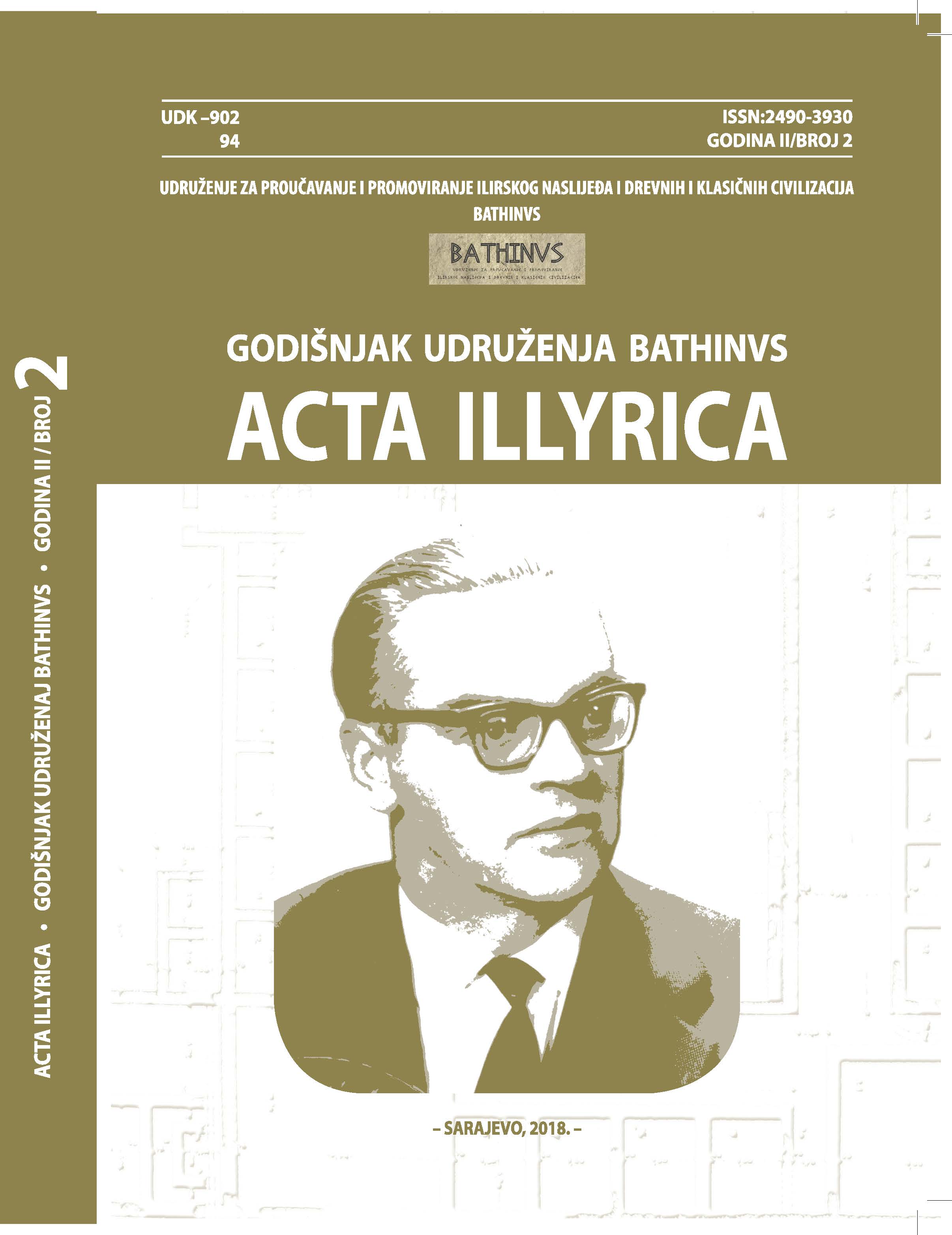Osvrt na arhitektonski kompleks na Mogorjelu kao problem historiografije XIX, XX i XXI stoljeća
A review of the Mogorjelo architectural complex as the historiographical problem of the 19th, 20th and 21st centuries
Author(s): Edin VeletovacSubject(s): Archaeology, Architecture, Ancient World, Recent History (1900 till today), 19th Century
Published by: Udruženje za proučavanje i promoviranje ilirskog naslijeđa i drevnih i klasičnih civilizacija “BATHINVS”
Keywords: Mogorjelo;Late Antiquity;historiography;villa rustica;castrum;
Summary/Abstract: Ever since it has been mentioned for the first time in the 19th century, the site of Mogorjelo has sparked the interest of the scholarship. Much of what we know today about this architectural complex is owed to Carl Patch who conducted a systematic archaeological research at this site from 1899 to 1903. Patch believed that the discovered remains of the complex, in fact, represent a former Roman camp or a castrum, one link in the system of Roman forts between the rivers Krka and Neretva. He dated this camp to the period of the 1st century which was restored in the second half of the 3rd century after being destroyed at the beginning of the 2nd century. Scholars such as Bojanovski, Anthes, Swoboda, Duval and Špehar agreed with Patch that Mogorjelo was a military camp, but they rejected the 1st century as its date. The second group of scholars rejected this view and believe that this site was the center of a large agricultural estate with supporting facilities. When it comes to construction phases and dating, the majority of scholars agree that the remains, visible today in Mogorjelo, belong to the Late Antiquity period, more specifically the 4th century. However, their opinions differ in case of construction. Thus, some scholars, such as Basler and Vetters, believe that the first construction phase can be dated to the 1st century, whereas others believe that this phase took place somewhat later.Although it has been more than one century since the discovery of Mogorjelo, we can assume that two basic requirements are necessary for obtaining a definite answer regarding its character and construction phases. The first requirement is the analysis and publication of over 150 crates of materials that Carl Patsch has dug out during the systematic research between 1899 and 1903. This material was sent to the National Museum in Sarajevo where it has been sitting in its depot ever since. An important drawback in the study of Mogorjelo is the lack of access to the logs compiled by Carl Patch, as well as his drawings, photographs and plans prepared from 1899 to 1903 that are being kept today in Südost-Institut in Munich. The unavailability of his excavation insights, remarks and notes represent a gap for all researchers who have dealt with Mogorjelo. Thus the second requirement is the publication of Patch’s materials which would enable all interested researchers to access his work and study this site.
Journal: Godišnjak Udruženja BATHINVS “Acta Illyrica”
- Issue Year: 2/2018
- Issue No: 2
- Page Range: 317-334
- Page Count: 18
- Language: Bosnian

